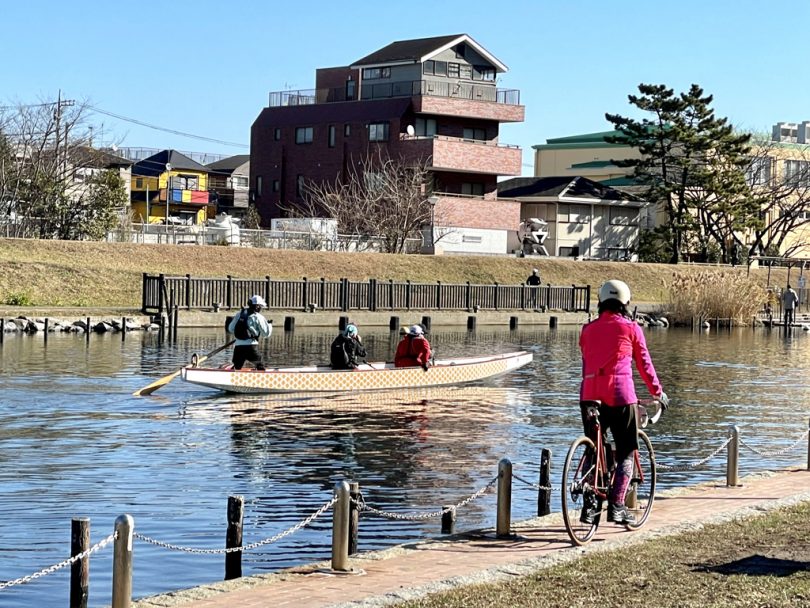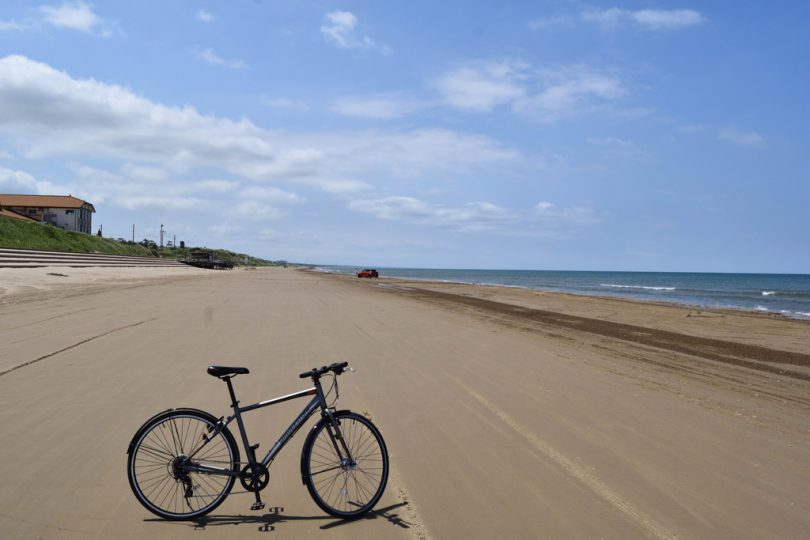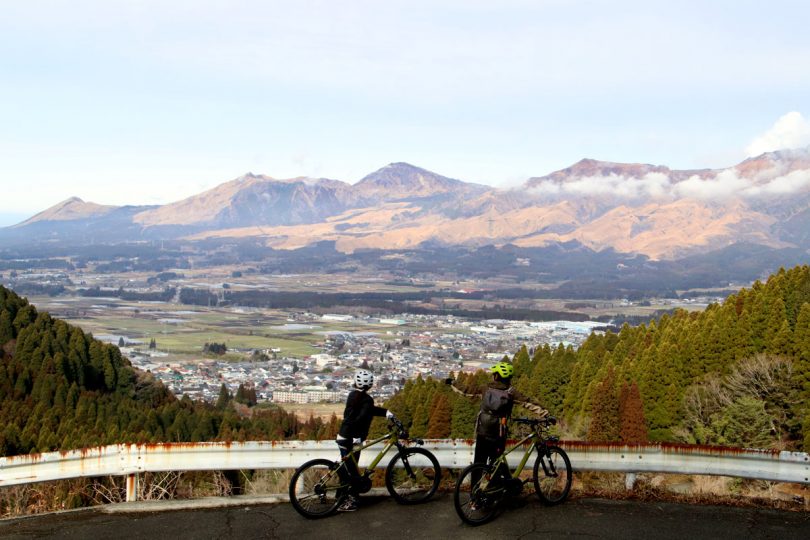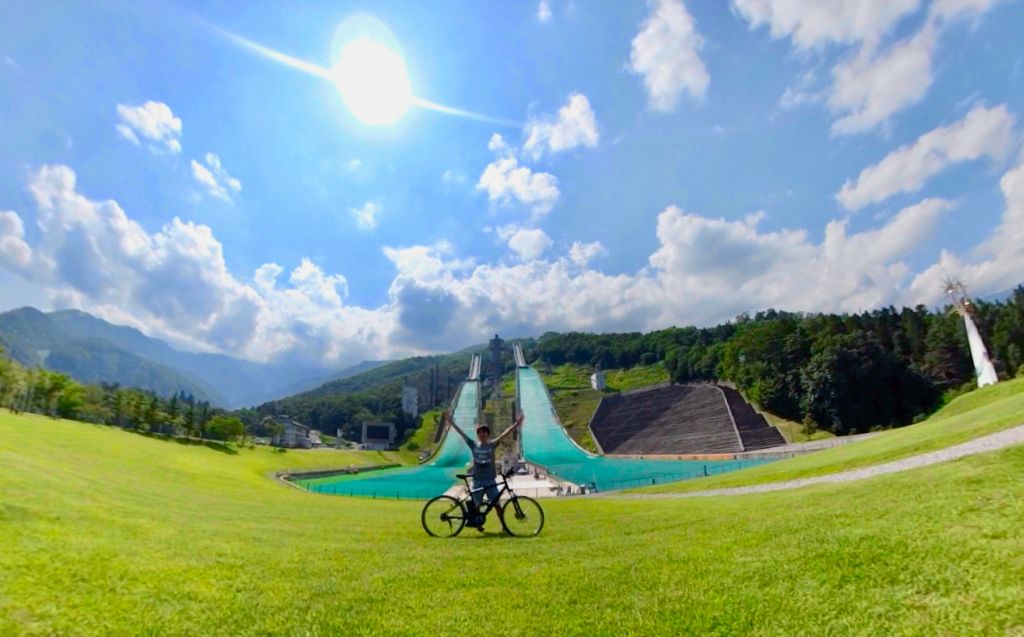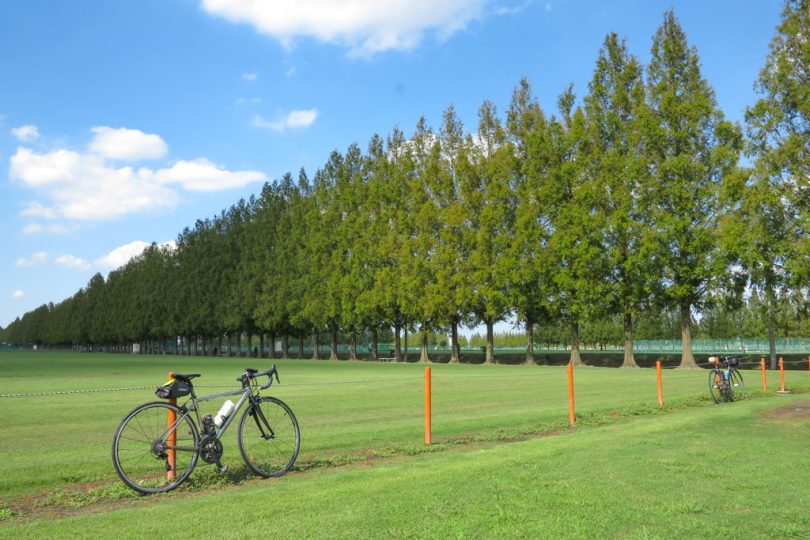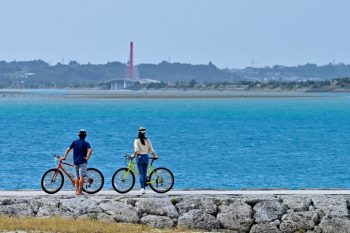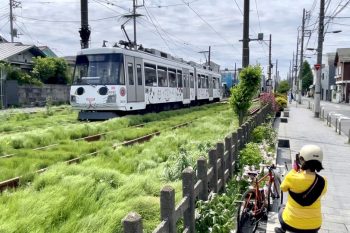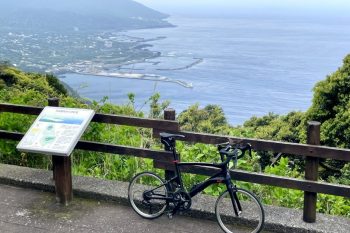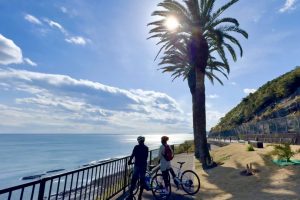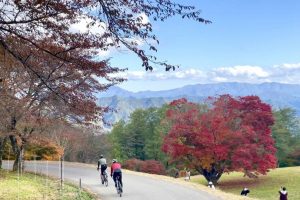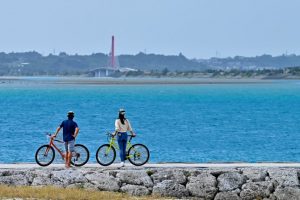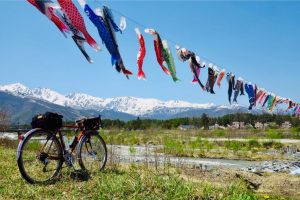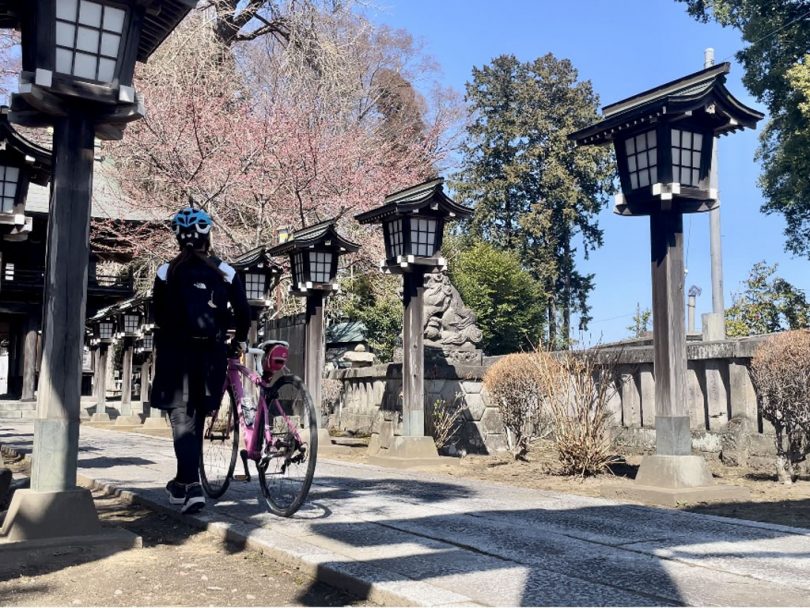
Sakura City was formed in 2005 through the merger of Ujiie Town and Kitsuregawa Town.
Located in the central part of Tochigi Prefecture, Sakura City was once an inn town along Oshu-kaido road and still retains an emotional townscape.
As the name suggests, there are many cherry blossom viewing spots and Kitsuregawa Hot Springs, which are considered one of the three best hot springs for beautiful skin in Japan, are among the city’s many attractions. We went pottering along Oshu-Kaido to enjoy the townscape.
Contents
Departing from Roadside Station Kitsuregawa
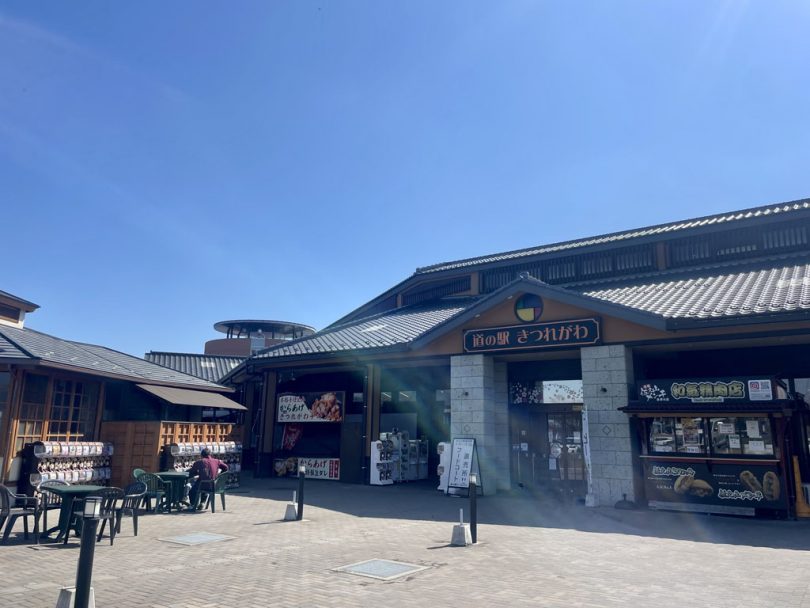
Roadside Station Kitsuregawa was renovated in 2017. It was designed under the concept of Taisho Roman and Taisho Modern.
Even on a weekday, it was crowded with many people.
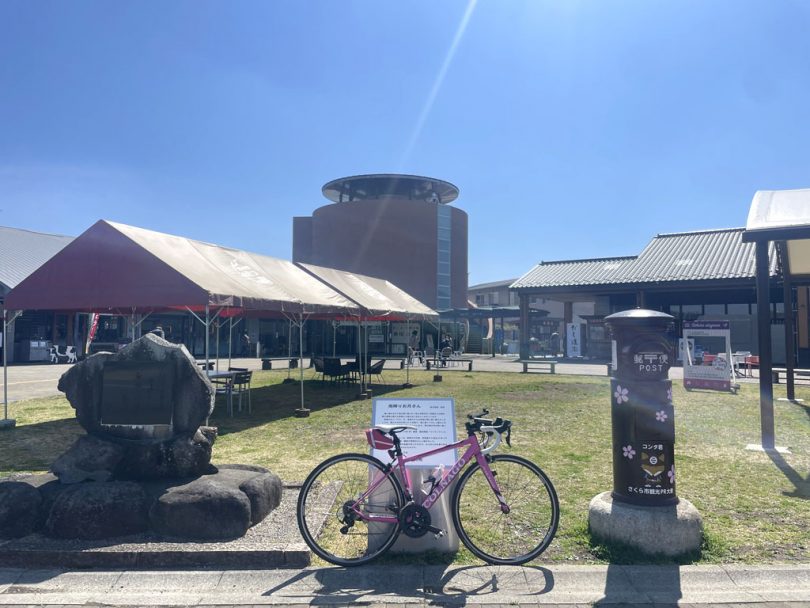
Located along Route293, it has a direct sales shop, a food court, and an adjacent building where visitors can soak in a hot spring.
There is also a free footbath where visitors can soak their feet after a hard day’s cycling. Departing from the roadside station, we will first tour around the former Kitsuregawa Town.
Former Kitsuregawa Town
Kitsuregawa’s history dates back to ancient times, when Goro Tadahiro Shioya built a castle there for his distinguished service in the Genpei War. During the Edo period, the town flourished as an inn town on Oshu-kaido road. Shioya clan ruled the area for 400years.
Even today, traces of the castle town and its days as an inn town can still be seen everywhere.

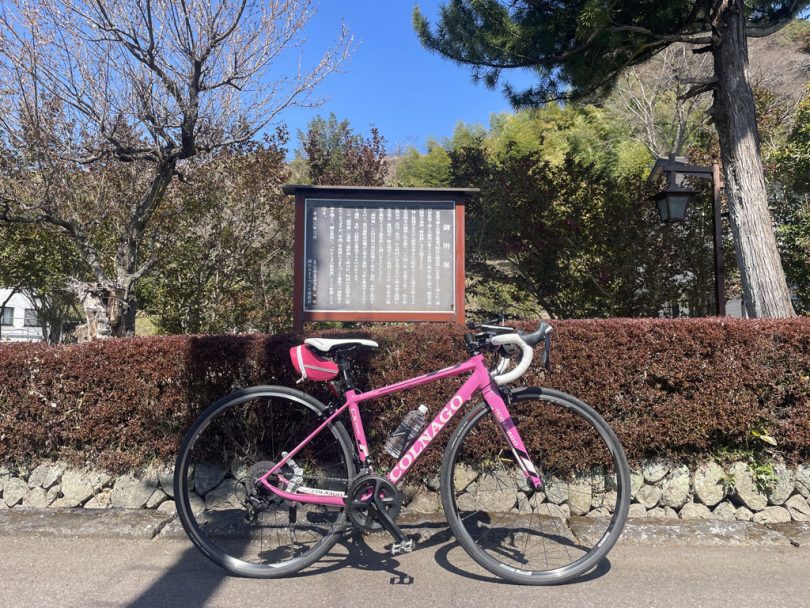
“Imperial moat” was excavated by the 10th lord of Kitsuregawa domain, Hiroji, to bring water from the river surrounding the town into the town, so that water could be used anywhere in the town for daily life.
In 1990, a part of the river was restored as part of a project to create “A town to be proud of”, and carp were released into the river to create a “peaceful walkway”.

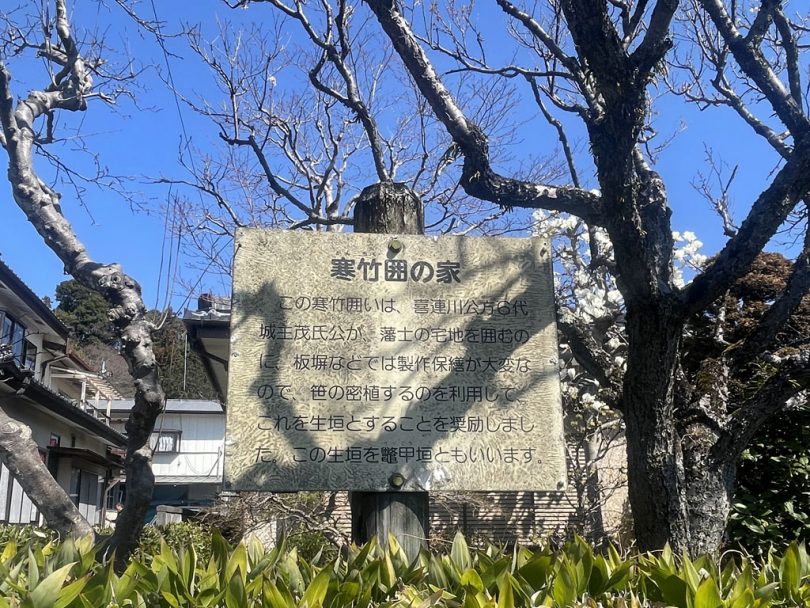
Near Imperial moat, there is a “cold bamboo enclosure”. It is said that Shigeru, the sixth generation of Kitsuregawa clan, encouraged the use of bamboos to enclose the residential areas of clan members because it would be too expensive to build and repair a wooden fence.
The streets were very nice and tasteful. Some people strolled around to enjoy the scenery.
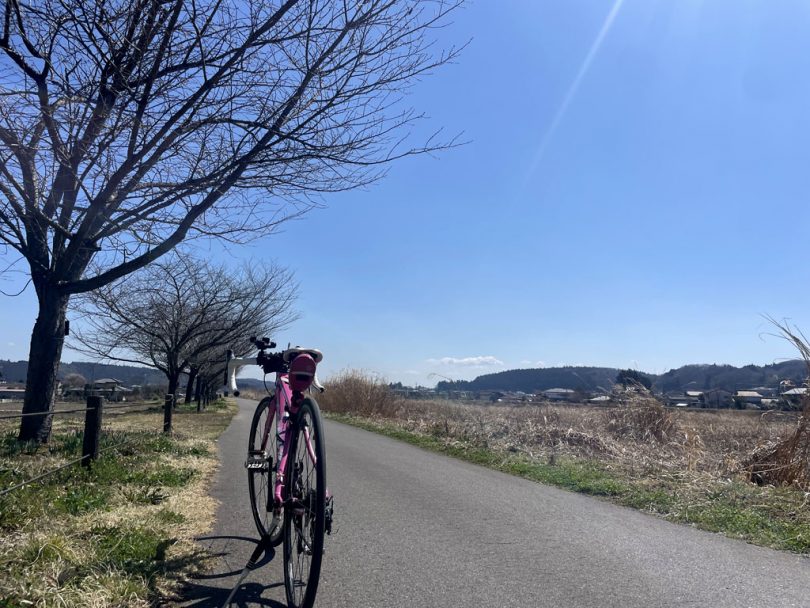
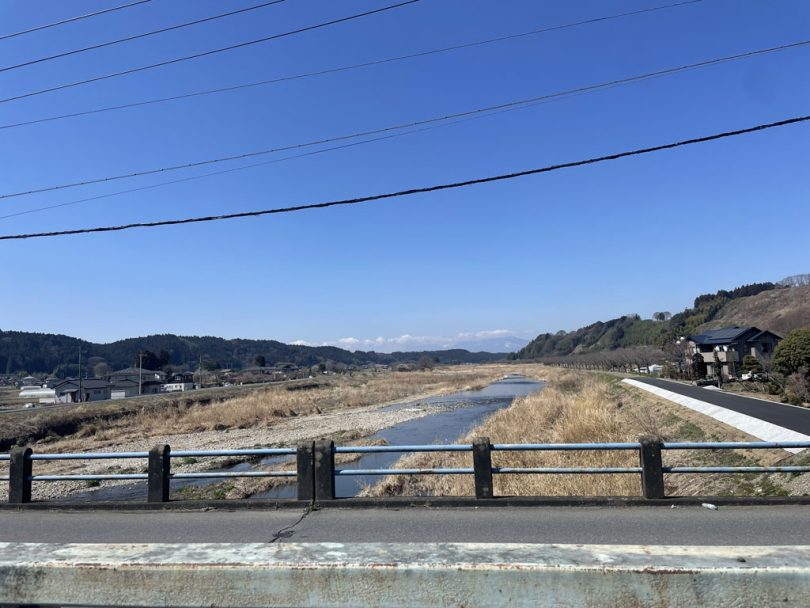
Along the Arakawa River, which flows through Kitsuregawa Town, the streets are lined with cherry blossom trees.
Cycling alongside the tranquil scenery was a peaceful experience.
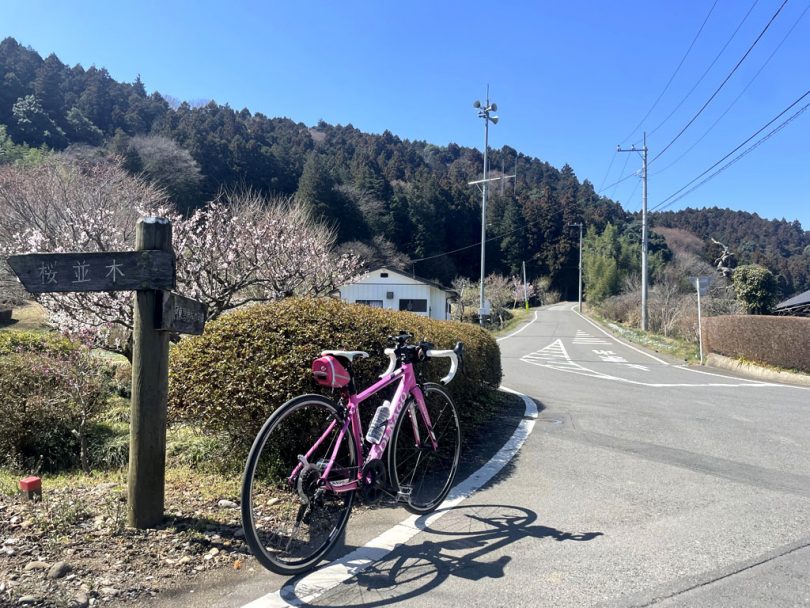
We decided to take Oshu-kaido road to head toward Ujiie.
To former Ujiie Town while visiting historical sites along Oshu-kaido road

It was pleasantly shaded by trees as we continued gently uphill.

Kawahigashi Hekigoto’s haiku monument. Hekigoto’s haiku is written as follows: “Down the hill, there are bushes on both sides, and chestnuts are on the right and left.” Hekigoto was a brilliant student of Masaoka Shiki and was known for his haiku poems.

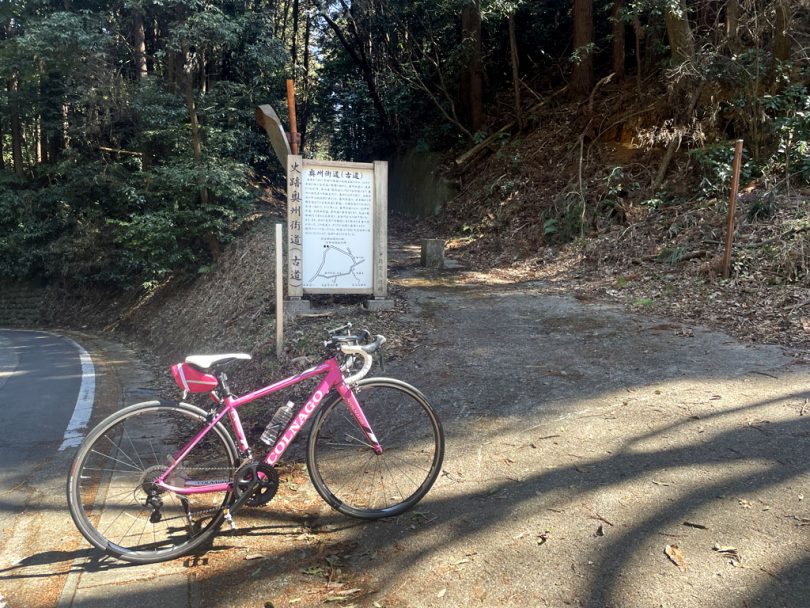
The steep hill was considered a difficult place to walk for a long time. 1880, a detour road was built and it was no longer used, so the old road is said to remain intact.
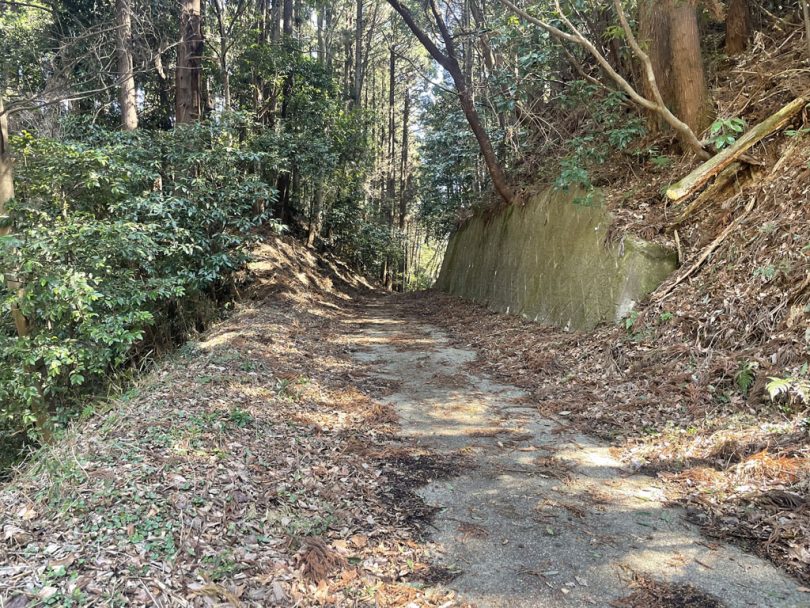
It is amazing to imagine what it must have been like to walk there.
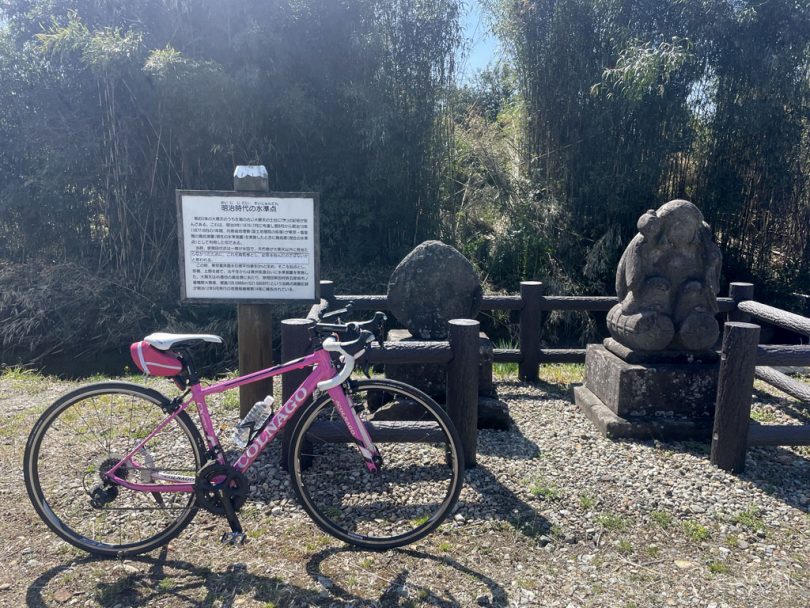
Passing Saotome Hot Spring, we saw two Daikokuten statues standing side by side on the side of the road. They are said to be “level points of the Meiji era”.
Former Ujiie Town
The origin of Ujiie Town dates back to the Kamakura period (1185-1333). In the Edo period (1603-1867), Ujiie-shuku was established, and private houses and merchant houses lined the streets for 1 km.
Since Kinugawa River channel led to Edo, Akutsu riverbank was built, and the area became the starting point for Kinugawa River boat transportation, and was very busy. The town still retains the atmosphere of an inn town.
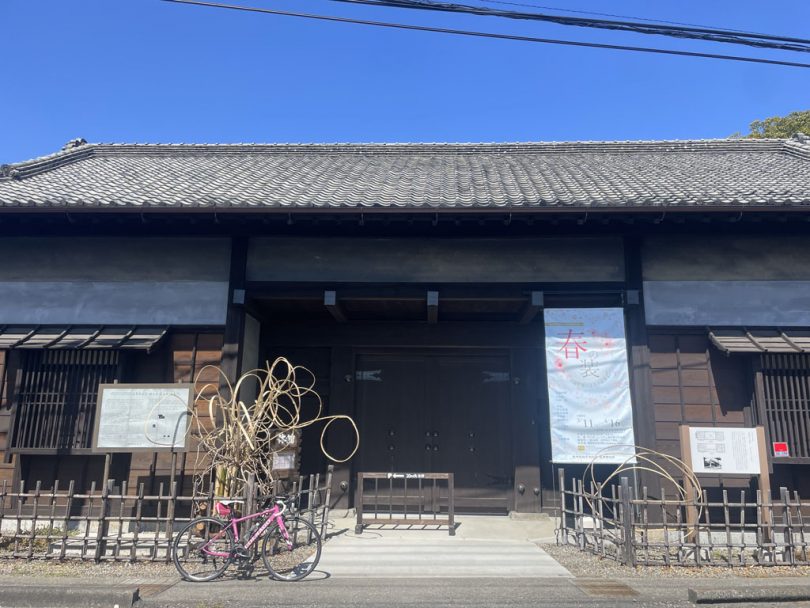
Takizawa Family Residence is a Tangible Cultural Property designated by Tochigi Prefecture.
The row-house gate facing the road is very splendid. Although there are no records of when it was built, it is one of the largest row-house gates existing in the region.
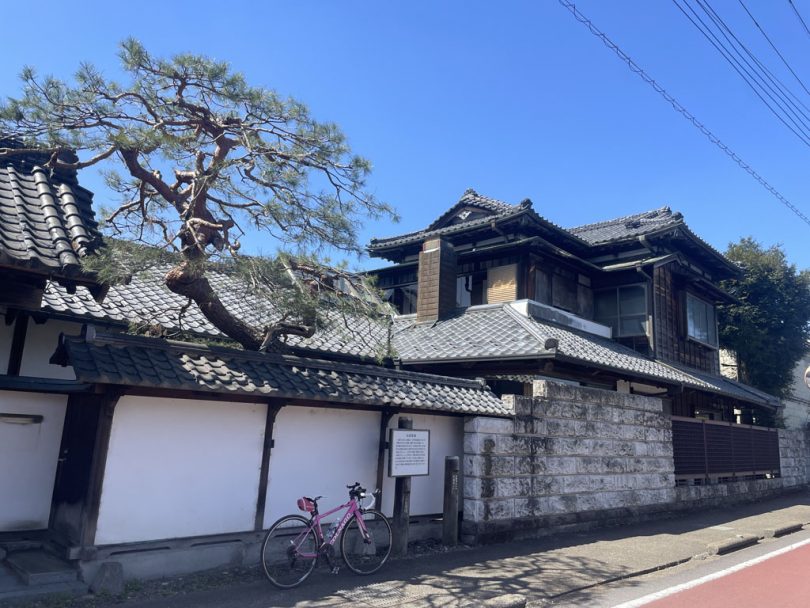
A quaint building near Ujiie Elementary School. It is Senkou Sake Brewery, a long-established brewery dating back to the late Edo period (1806).
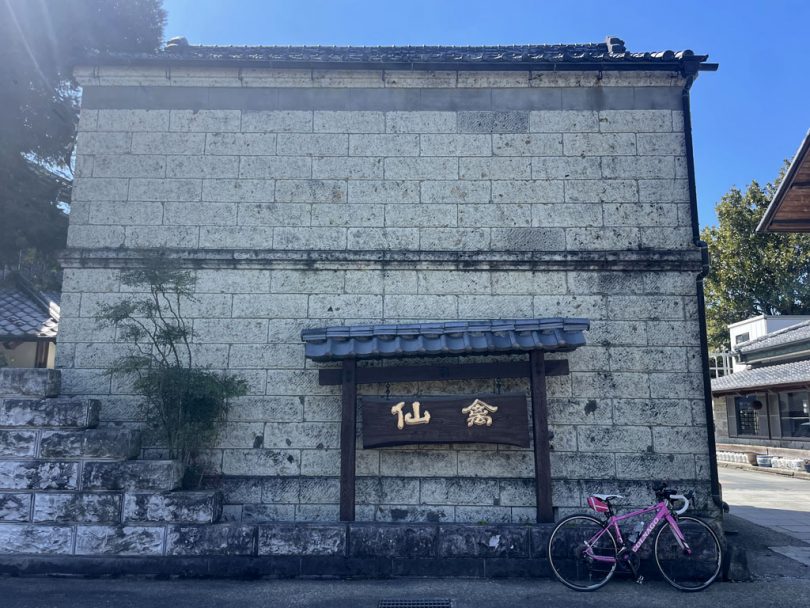
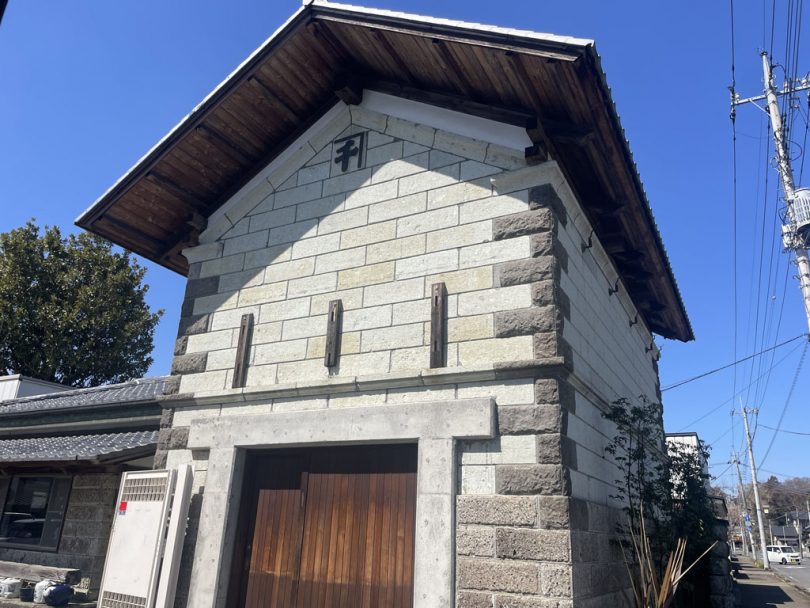
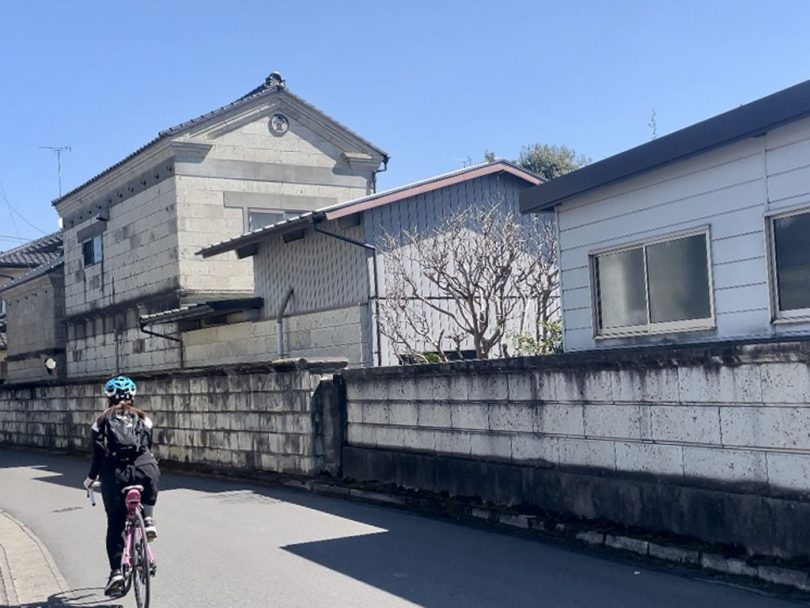
We rode through a quiet town full of emotion.
We stopped at Imamiya Shrine, built in 1060, which has city-designated cultural assets such as the main shrine, the tower gate, and the ema inside the worship hall.
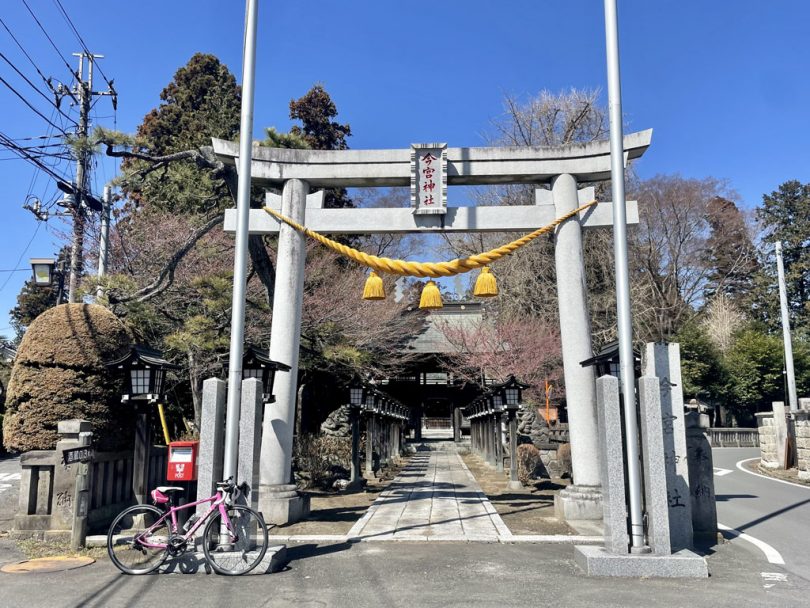
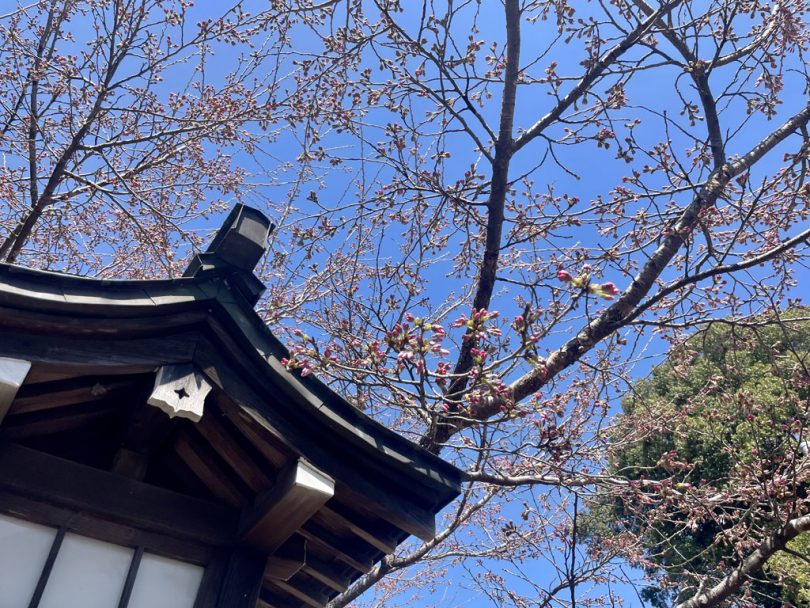
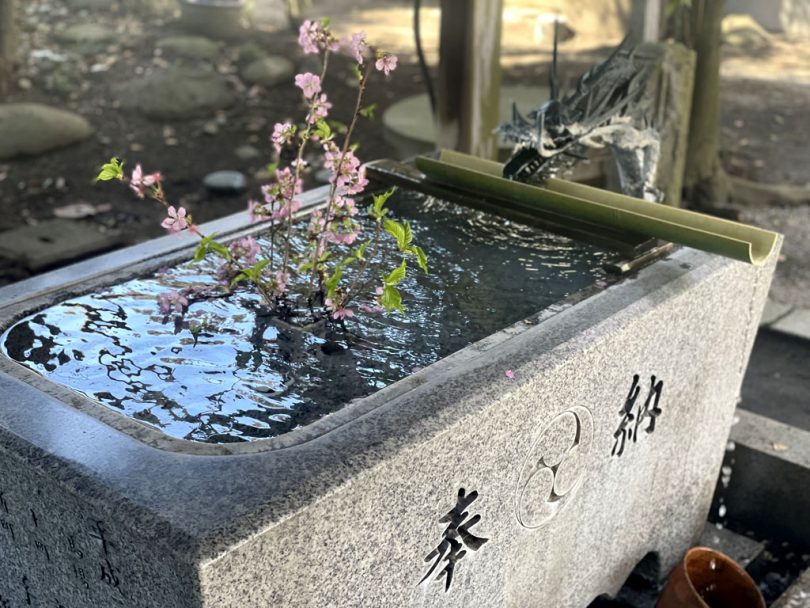


We got “goshuin” (red stamp of shines) , which was seasonal limited edition until April 23. It was a memorable visit to the shrine with a sense of the season.
Menkoubou Nakayama, a creative noodle dining restaurant
We had lunch at a restaurant near Ujiie Elementary School.

It is a cute restaurant with a café-like atmosphere.

It just opened in June 2022. The interior of the restaurant is woodsy and has a soothing wooden smell.
Across the street is Menkobo Nakayama, which sells yakisoba and other noodles.
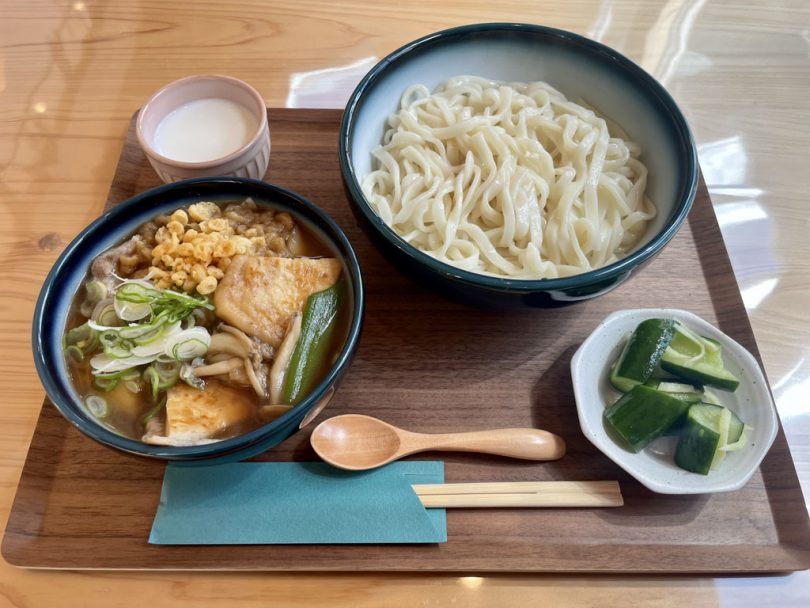
We ordered “Udon noodles in a gravy soup with plenty of root vegetables”. It comes with pickled cucumbers and almond jelly.
The udon was served in a sweet dipping sauce filled with vegetables and meat, and the udon was smooth and glutinous.
It was very tasty and satisfying.
After finishing our meal, we stopped by JR Ujiie Station.


The post boxes and walls with cherry blossoms painted on them were bright and cheerful.
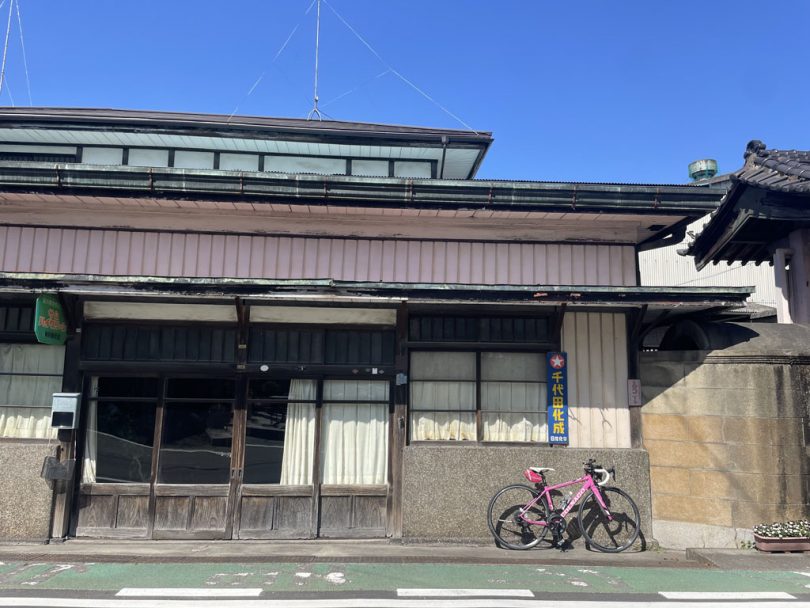
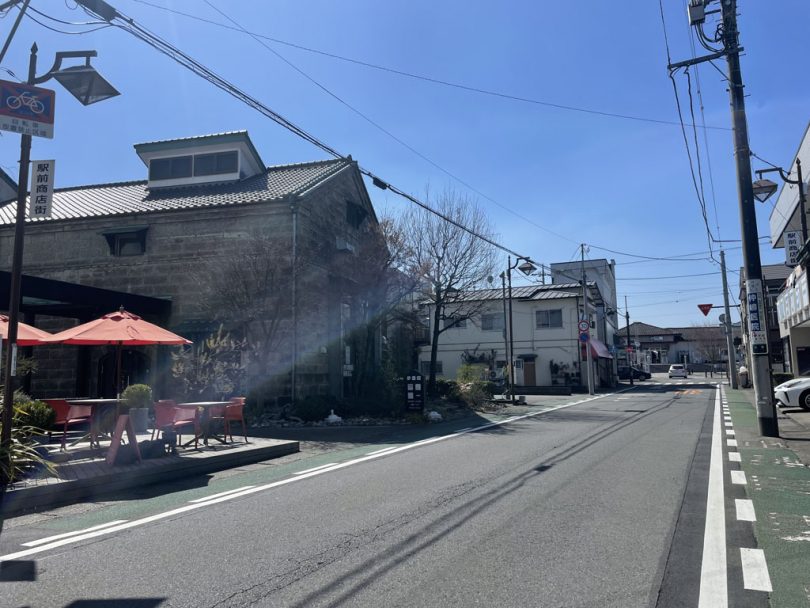
There were retro buildings on the street near the station, and we enjoyed looking at the townscape.

On the way back to the roadside station, we went to Sakura City General Park. Cherry blossoms and magnolias were in bloom, attracting our eyes.

Behind the rural landscape was Nikko mountain range. The magnificent view was also wonderful.
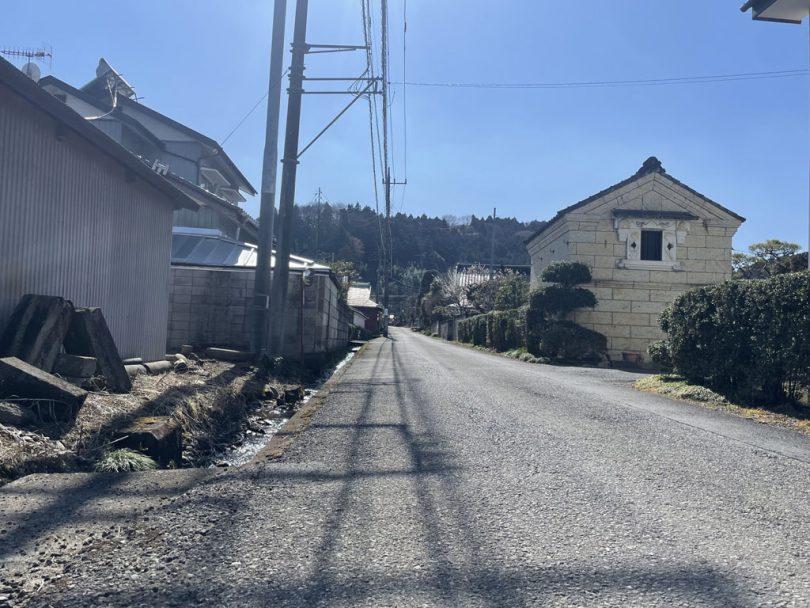
The streets of Saotome, Sakura City, made us lose track of time.

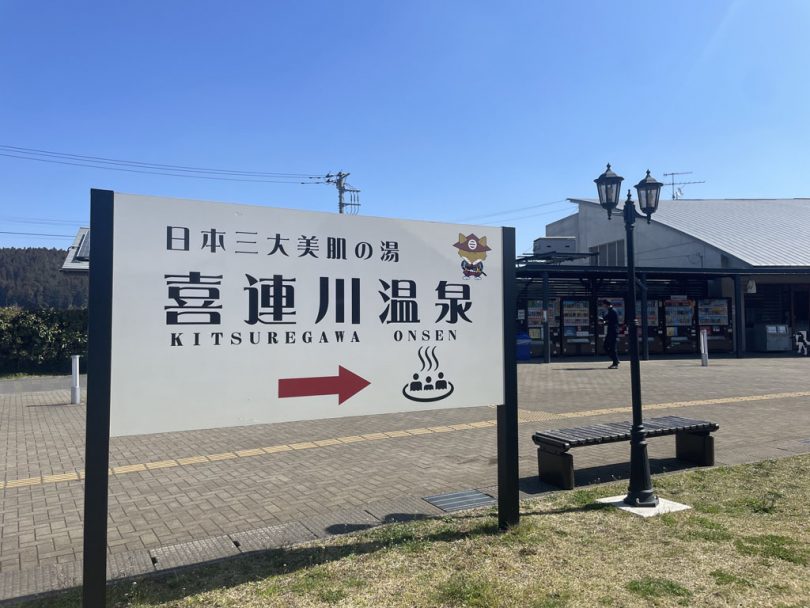
We returned to the roadside station and decided to soak in the hot spring. There was a large bath and an open-air bath, and we were able to take a relaxing soak.
Onsen towels, bath salts, and lotion were also available at the direct sales counter.
Course Introduction
▼Roadside Station Kitsuregawa
https://michinoeki-kitsuregawa.jp/
▼Sakura City Tourism Navi
https://sakura-navi.net/
Summary
This 25 km potter’s ride to enjoy Sakura City is a satisfying course even for beginners as it ran through flat and hilly terrain.
We were able to enjoy the wonderful scenery while feeling the history. Soaking in a hot spring bath at the end of the tour is also a unique way to enjoy a hot spring resort.


